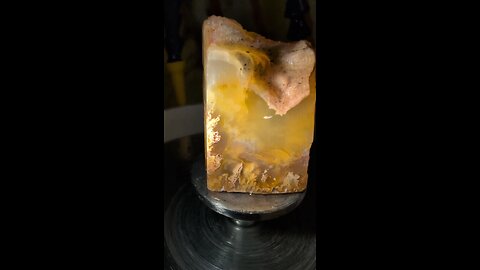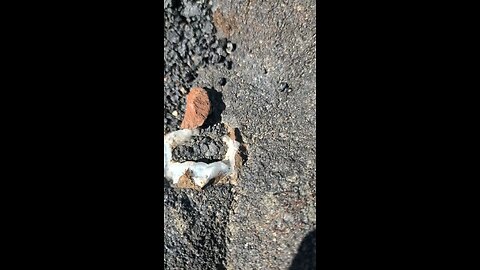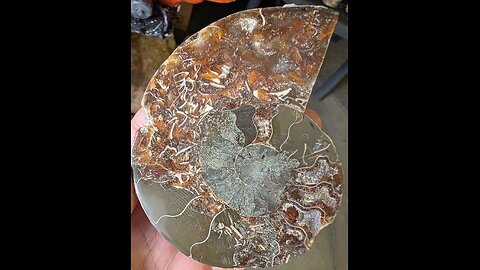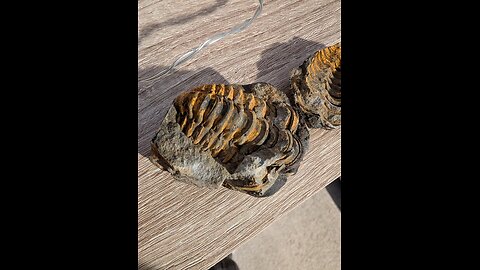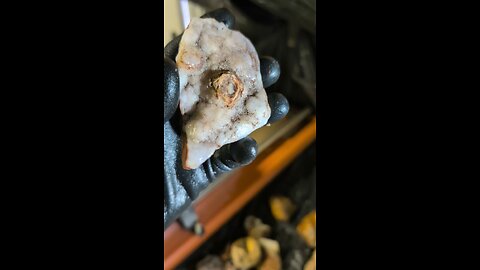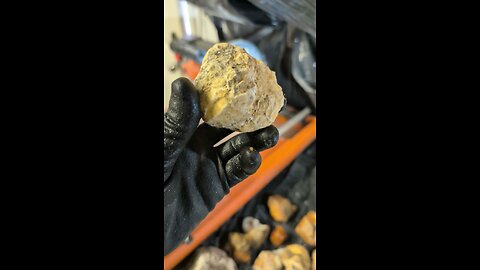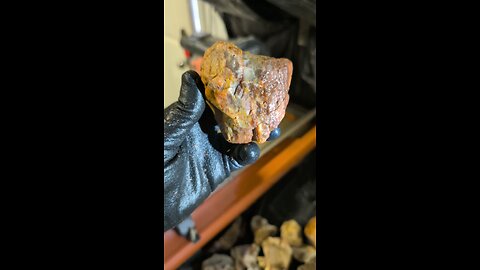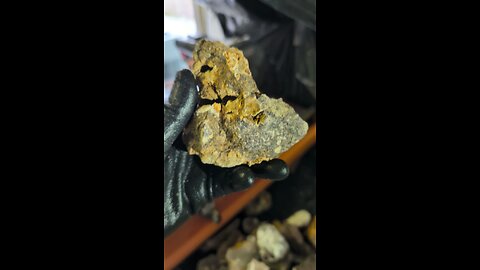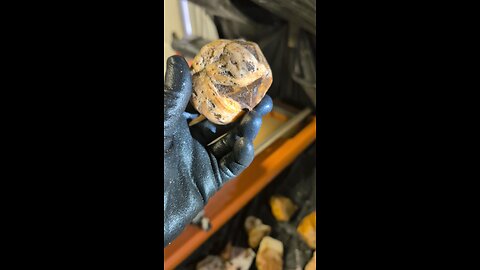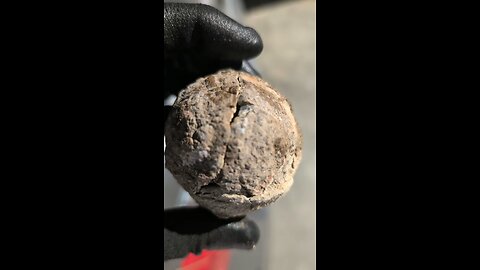
Idaho!
252 videos
Updated 19 days ago
Found in Idaho!
Idaho's geological profile is complex and diverse, reflecting a long and varied geological history:
Geological History:
Precambrian Era: Some of Idaho's oldest rocks date back over 2.5 billion years, with significant formations in the Idaho Panhandle, consisting of sedimentary and metamorphic rocks.
Paleozoic and Mesozoic Eras: Idaho was largely covered by shallow seas, leading to the deposition of sedimentary rocks and the formation of marine fossils. Tectonic events like the Antler and Sevier orogenies contributed to mountain building.
Cenozoic Era: This period saw significant volcanic activity, particularly in the formation of the Snake River Plain. Volcanic eruptions, including those from the Yellowstone hotspot, have played a major role in shaping Idaho's landscape.
Geological Features:
Mountain Ranges: Idaho is home to several mountain ranges, like the Sawtooth, Bitterroot, and Owyhee Mountains, which are the result of tectonic activity and erosion.
Snake River Plain: A unique feature formed by volcanism, it stretches across southern Idaho and is part of the track of the Yellowstone hotspot.
Basins and Ranges: In southern Idaho, the landscape shows the influence of the Basin and Range Province, characterized by north-south trending mountain ranges and valleys.
Faults: Young faults are present, contributing to the seismic activity in the region.
Geological Resources:
Minerals: Idaho is rich in minerals, including silver, lead, zinc, copper, gold, and gemstones like star garnet, opal, and jasper. The Silver City Mining District is famous for minerals like orpiment and realgar.
Fossils: The Hagerman Fossil Beds National Monument is known for its rich deposits of Miocene fossils, including the famous Hagerman horse.
Geothermal: There are geothermal wells and thermal springs, reflecting the region's volcanic past.
Oil and Gas: While not as extensive as in other states, there are some oil and gas explorations.
Geological Survey and Mapping:
Idaho Geological Survey: Since 1919, this organization has been pivotal in studying and reporting on Idaho's geology. They offer interactive maps, geological publications, and data on water, minerals, and energy resources.
Educational Resources: The "Digital Geology of Idaho" provides educational modules, maps, and visualizations to teach about Idaho's geology, including fly-through visualizations of river basins with geology "draped" over the topography.
Modern Geology:
Current Research: Continuous research into Idaho's geology contributes to understanding seismic risks, resource potential, and environmental management.
Rockhounding: Idaho's diverse geology makes it a popular destination for rockhounds searching for crystals, gemstones, and minerals.
Idaho's geological profile not only tells a story of earth's dynamic history but also influences its current landscape, natural resources, and even its economic activities. For detailed study or practical applications, resources from the Idaho Geological Survey are invaluable.
-
Whole & Broken Geodes!
 RyanzRocksA geode is a hollow, usually spherical rock, that when broken open reveals a cavity lined with crystals or other mineral formations. Here are some key points about geodes: Formation: Geodes form when gas bubbles or cavities in volcanic or sedimentary rock are filled with mineral-rich water. As the water evaporates, it leaves behind minerals which crystallize over time, lining the inside of the cavity. Structure: The outer layer of a geode is typically rough and nondescript, often making it look like an ordinary rock until it's cracked open. Inside, you might find crystals like quartz, amethyst, calcite, or even rarer minerals. Location: They are commonly found in regions with volcanic activity or limestone deposits. Famous locations include parts of the United States, Brazil, Uruguay, and Mexico. Uses: Geodes are popular among rock collectors and are often cut and polished for use in jewelry or as decorative pieces. Some are also used in metaphysical practices for their supposed healing properties. Identification: To identify a geode, one would typically look for a rock that is unusually light for its size or has a hollow sound when tapped. However, the only definitive way to confirm is by breaking it open or using specialized equipment like X-rays. If you're interested in finding or identifying geodes, or if you have any other questions about them, feel free to ask!Rabbit Springs Geode Field, is a well-known rockhounding site located in southern Idaho near the Nevada border. It’s a popular spot for collectors seeking thundereggs—spherical rocks that often contain beautiful agate or crystal-filled centers, some of which fluoresce under UV light due to mineral content like chalcedony or quartz.65 views
RyanzRocksA geode is a hollow, usually spherical rock, that when broken open reveals a cavity lined with crystals or other mineral formations. Here are some key points about geodes: Formation: Geodes form when gas bubbles or cavities in volcanic or sedimentary rock are filled with mineral-rich water. As the water evaporates, it leaves behind minerals which crystallize over time, lining the inside of the cavity. Structure: The outer layer of a geode is typically rough and nondescript, often making it look like an ordinary rock until it's cracked open. Inside, you might find crystals like quartz, amethyst, calcite, or even rarer minerals. Location: They are commonly found in regions with volcanic activity or limestone deposits. Famous locations include parts of the United States, Brazil, Uruguay, and Mexico. Uses: Geodes are popular among rock collectors and are often cut and polished for use in jewelry or as decorative pieces. Some are also used in metaphysical practices for their supposed healing properties. Identification: To identify a geode, one would typically look for a rock that is unusually light for its size or has a hollow sound when tapped. However, the only definitive way to confirm is by breaking it open or using specialized equipment like X-rays. If you're interested in finding or identifying geodes, or if you have any other questions about them, feel free to ask!Rabbit Springs Geode Field, is a well-known rockhounding site located in southern Idaho near the Nevada border. It’s a popular spot for collectors seeking thundereggs—spherical rocks that often contain beautiful agate or crystal-filled centers, some of which fluoresce under UV light due to mineral content like chalcedony or quartz.65 views -
Moss Agate Polish!
 RyanzRocksMoss agate is a type of chalcedony, a mineral in the quartz family, known for its unique and beautiful appearance. It’s typically translucent to semi-opaque with a milky or clear base, featuring green, moss-like inclusions that resemble tiny ferns, trees, or landscapes. These inclusions are usually formed by minerals like chlorite, iron, or manganese, giving it that earthy, forest-floor vibe. Unlike true agates, which have banded patterns, moss agate doesn’t always show banding—its charm lies in those organic, dendritic (branch-like) designs. It’s often used in jewelry, like rings or pendants, because of its durability (it’s about a 6.5-7 on the Mohs hardness scale) and its one-of-a-kind look. People also associate it with calming, grounding energy in crystal enthusiast circles, though that’s more anecdotal than scientific. Found in places like India, Brazil, and the U.S., it’s been prized for centuries, even popping up in ancient cultures for decorative or spiritual uses. Each piece is a little different, which is part of what makes it so cool.92 views 1 comment
RyanzRocksMoss agate is a type of chalcedony, a mineral in the quartz family, known for its unique and beautiful appearance. It’s typically translucent to semi-opaque with a milky or clear base, featuring green, moss-like inclusions that resemble tiny ferns, trees, or landscapes. These inclusions are usually formed by minerals like chlorite, iron, or manganese, giving it that earthy, forest-floor vibe. Unlike true agates, which have banded patterns, moss agate doesn’t always show banding—its charm lies in those organic, dendritic (branch-like) designs. It’s often used in jewelry, like rings or pendants, because of its durability (it’s about a 6.5-7 on the Mohs hardness scale) and its one-of-a-kind look. People also associate it with calming, grounding energy in crystal enthusiast circles, though that’s more anecdotal than scientific. Found in places like India, Brazil, and the U.S., it’s been prized for centuries, even popping up in ancient cultures for decorative or spiritual uses. Each piece is a little different, which is part of what makes it so cool.92 views 1 comment -
Geode Field!
 RyanzRocksRabbit Springs Geode Field, also known as Rabbit Springs Thundereggs, is a well-known rockhounding site located in southern Idaho near the Nevada border. It’s a popular spot for collectors seeking thundereggs—spherical rocks that often contain beautiful agate or crystal-filled centers, some of which fluoresce under UV light due to mineral content like chalcedony or quartz. This site sits along U.S. Highway 93, roughly 38 miles from Twin Falls, Idaho, and about 130 miles from Mountain Home, making it accessible yet remote enough to feel like a true adventure. The coordinates for Rabbit Springs are approximately 42.06572°N, -114.67387°W. You can get there by driving south from Twin Falls toward Jackpot, Nevada, and looking for the old Rabbit Springs rest area, a historical marker for the site. The terrain is rugged, typical of the high desert landscape in this region, with volcanic and sedimentary rocks from ancient geological activity providing the perfect conditions for thunderegg formation. These rocks are remnants of gas pockets in lava flows that filled with silica-rich fluids over millions of years. No heavy digging is necessary here—surface collecting with a bucket is the way to go, as many thundereggs are weathered out and scattered across the ground. A rock hammer might come in handy to crack them open, but locals and seasoned rockhounds suggest the best finds are often already exposed, and breaking into the bedrock isn’t worth the effort. The thundereggs vary in size, from plums to grapefruits, and some glow a striking green or orange under a 365nm UV light, thanks to trace minerals. Rumors of radioactivity have floated around, but tests with Geiger counters have debunked that myth. The site is on public land managed by the Bureau of Land Management (BLM), so casual collecting is allowed as long as you’re not using heavy machinery or digging extensive tunnels—stick to hand tools and surface finds. Any vehicle can make the trip, though the final approach might involve a short walk from the highway. September’s cooler weather makes it an ideal time to visit, avoiding the summer heat of this arid region.43 views
RyanzRocksRabbit Springs Geode Field, also known as Rabbit Springs Thundereggs, is a well-known rockhounding site located in southern Idaho near the Nevada border. It’s a popular spot for collectors seeking thundereggs—spherical rocks that often contain beautiful agate or crystal-filled centers, some of which fluoresce under UV light due to mineral content like chalcedony or quartz. This site sits along U.S. Highway 93, roughly 38 miles from Twin Falls, Idaho, and about 130 miles from Mountain Home, making it accessible yet remote enough to feel like a true adventure. The coordinates for Rabbit Springs are approximately 42.06572°N, -114.67387°W. You can get there by driving south from Twin Falls toward Jackpot, Nevada, and looking for the old Rabbit Springs rest area, a historical marker for the site. The terrain is rugged, typical of the high desert landscape in this region, with volcanic and sedimentary rocks from ancient geological activity providing the perfect conditions for thunderegg formation. These rocks are remnants of gas pockets in lava flows that filled with silica-rich fluids over millions of years. No heavy digging is necessary here—surface collecting with a bucket is the way to go, as many thundereggs are weathered out and scattered across the ground. A rock hammer might come in handy to crack them open, but locals and seasoned rockhounds suggest the best finds are often already exposed, and breaking into the bedrock isn’t worth the effort. The thundereggs vary in size, from plums to grapefruits, and some glow a striking green or orange under a 365nm UV light, thanks to trace minerals. Rumors of radioactivity have floated around, but tests with Geiger counters have debunked that myth. The site is on public land managed by the Bureau of Land Management (BLM), so casual collecting is allowed as long as you’re not using heavy machinery or digging extensive tunnels—stick to hand tools and surface finds. Any vehicle can make the trip, though the final approach might involve a short walk from the highway. September’s cooler weather makes it an ideal time to visit, avoiding the summer heat of this arid region.43 views -
Ammonite fossil!
 RyanzRocksThe fossil in the image appears to be a cross-section of an ammonite. Ammonites are a group of extinct marine mollusks within the class Cephalopoda, related to modern squids, octopuses, and nautiluses. The distinctive spiral shell with internal chambers is a key characteristic of ammonites. The chambers are divided by septa, which are the walls you see in the fossil, and the intricate patterns are typical of the internal structure of ammonite shells.82 views 1 comment
RyanzRocksThe fossil in the image appears to be a cross-section of an ammonite. Ammonites are a group of extinct marine mollusks within the class Cephalopoda, related to modern squids, octopuses, and nautiluses. The distinctive spiral shell with internal chambers is a key characteristic of ammonites. The chambers are divided by septa, which are the walls you see in the fossil, and the intricate patterns are typical of the internal structure of ammonite shells.82 views 1 comment -
Trilobite fossil!
 RyanzRocksBased on the image, the fossil appears to be a trilobite. Trilobites are a group of extinct marine arachnomorph arthropods that form the class Trilobita. They are one of the earliest-known groups of arthropods, with their first appearance in the fossil record defining the base of the Atdabanian stage of the Early Cambrian period. The segmented structure and the overall shape in the image are characteristic of trilobite fossils.63 views 1 comment
RyanzRocksBased on the image, the fossil appears to be a trilobite. Trilobites are a group of extinct marine arachnomorph arthropods that form the class Trilobita. They are one of the earliest-known groups of arthropods, with their first appearance in the fossil record defining the base of the Atdabanian stage of the Early Cambrian period. The segmented structure and the overall shape in the image are characteristic of trilobite fossils.63 views 1 comment -
Agate Drop!
 RyanzRocksAgate is a microcrystalline variety of quartz, specifically a form of chalcedony, known for its fine grain and bright color patterns. Here are some key points about agate: Formation: Agate forms in volcanic and sedimentary rocks. It often begins as a cavity in the rock, which then gets filled with layers of silica-rich water. Over time, this solution deposits minerals in layers, creating the characteristic banding of agate. This process can take millions of years. Appearance: Agate is famous for its beautiful, often banded patterns of color, which can range from translucent to opaque. Colors include white, blue, red, black, yellow, and brown among others, with the patterns formed by the successive layers of chalcedony being deposited. Sometimes, agates can be found with inclusions like moss (moss agate) or even fossils. Types of Agate: Banded Agate: Shows clear, concentric bands of color. Moss Agate: Contains mineral inclusions that look like moss or foliage. Dendritic Agate: Similar to moss agate but with tree-like or branch-like patterns. Fire Agate: Contains iridescent layers that appear to glow with fiery colors. Lace Agate: Features lace-like patterns, most notably in Blue Lace Agate from Namibia. Crazy Lace Agate: Known for its wild, chaotic patterns of colors. Locations: Agates are found worldwide, but some of the most famous locations include Brazil, Uruguay, Mexico, Germany, Madagascar, and the United States (particularly in Oregon, Washington, and Idaho). Uses: Jewelry: Due to its beauty when polished, agate is widely used in jewelry like rings, pendants, and beads. Decorative Items: Larger pieces or slices are used for decorative objects, bookends, or as display pieces. Metaphysical: In metaphysical practices, agate is believed to have various healing properties, like balancing physical, emotional, and intellectual energy, and promoting strength and courage. Cultural Significance: Agate has been used since ancient times; it was prized in Ancient Egypt for amulets and seals, in Greece and Rome for intaglios and cameos, and by many other cultures for its beauty and supposed protective qualities. Cutting and Polishing: When cutting agate for jewelry or display, lapidaries look for the most visually appealing patterns. The process involves sawing, grinding, and polishing to bring out the internal beauty of the stone. Agate's diversity in color and pattern, combined with its durability, makes it one of the most sought-after stones in the world of gemology and mineral collecting.48 views
RyanzRocksAgate is a microcrystalline variety of quartz, specifically a form of chalcedony, known for its fine grain and bright color patterns. Here are some key points about agate: Formation: Agate forms in volcanic and sedimentary rocks. It often begins as a cavity in the rock, which then gets filled with layers of silica-rich water. Over time, this solution deposits minerals in layers, creating the characteristic banding of agate. This process can take millions of years. Appearance: Agate is famous for its beautiful, often banded patterns of color, which can range from translucent to opaque. Colors include white, blue, red, black, yellow, and brown among others, with the patterns formed by the successive layers of chalcedony being deposited. Sometimes, agates can be found with inclusions like moss (moss agate) or even fossils. Types of Agate: Banded Agate: Shows clear, concentric bands of color. Moss Agate: Contains mineral inclusions that look like moss or foliage. Dendritic Agate: Similar to moss agate but with tree-like or branch-like patterns. Fire Agate: Contains iridescent layers that appear to glow with fiery colors. Lace Agate: Features lace-like patterns, most notably in Blue Lace Agate from Namibia. Crazy Lace Agate: Known for its wild, chaotic patterns of colors. Locations: Agates are found worldwide, but some of the most famous locations include Brazil, Uruguay, Mexico, Germany, Madagascar, and the United States (particularly in Oregon, Washington, and Idaho). Uses: Jewelry: Due to its beauty when polished, agate is widely used in jewelry like rings, pendants, and beads. Decorative Items: Larger pieces or slices are used for decorative objects, bookends, or as display pieces. Metaphysical: In metaphysical practices, agate is believed to have various healing properties, like balancing physical, emotional, and intellectual energy, and promoting strength and courage. Cultural Significance: Agate has been used since ancient times; it was prized in Ancient Egypt for amulets and seals, in Greece and Rome for intaglios and cameos, and by many other cultures for its beauty and supposed protective qualities. Cutting and Polishing: When cutting agate for jewelry or display, lapidaries look for the most visually appealing patterns. The process involves sawing, grinding, and polishing to bring out the internal beauty of the stone. Agate's diversity in color and pattern, combined with its durability, makes it one of the most sought-after stones in the world of gemology and mineral collecting.48 views -
Snowball geode!
 RyanzRocksA geode is a hollow, usually spherical rock, that when broken open reveals a cavity lined with crystals or other mineral formations. Here are some key points about geodes: Formation: Geodes form when gas bubbles or cavities in volcanic or sedimentary rock are filled with mineral-rich water. As the water evaporates, it leaves behind minerals which crystallize over time, lining the inside of the cavity. Structure: The outer layer of a geode is typically rough and nondescript, often making it look like an ordinary rock until it's cracked open. Inside, you might find crystals like quartz, amethyst, calcite, or even rarer minerals. Location: They are commonly found in regions with volcanic activity or limestone deposits. Famous locations include parts of the United States, Brazil, Uruguay, and Mexico. Uses: Geodes are popular among rock collectors and are often cut and polished for use in jewelry or as decorative pieces. Some are also used in metaphysical practices for their supposed healing properties. Identification: To identify a geode, one would typically look for a rock that is unusually light for its size or has a hollow sound when tapped. However, the only definitive way to confirm is by breaking it open or using specialized equipment like X-rays.44 views
RyanzRocksA geode is a hollow, usually spherical rock, that when broken open reveals a cavity lined with crystals or other mineral formations. Here are some key points about geodes: Formation: Geodes form when gas bubbles or cavities in volcanic or sedimentary rock are filled with mineral-rich water. As the water evaporates, it leaves behind minerals which crystallize over time, lining the inside of the cavity. Structure: The outer layer of a geode is typically rough and nondescript, often making it look like an ordinary rock until it's cracked open. Inside, you might find crystals like quartz, amethyst, calcite, or even rarer minerals. Location: They are commonly found in regions with volcanic activity or limestone deposits. Famous locations include parts of the United States, Brazil, Uruguay, and Mexico. Uses: Geodes are popular among rock collectors and are often cut and polished for use in jewelry or as decorative pieces. Some are also used in metaphysical practices for their supposed healing properties. Identification: To identify a geode, one would typically look for a rock that is unusually light for its size or has a hollow sound when tapped. However, the only definitive way to confirm is by breaking it open or using specialized equipment like X-rays.44 views -
Agatized wood!
 RyanzRocksThis looks like petrified wood. The distinct wood grain pattern visible on the surface, combined with the stone-like texture and the various colors, are strong indicators of petrified wood. Petrification is a process where organic material is replaced by minerals, essentially turning wood into stone while preserving its original structure. The colors are often due to the minerals present during the petrification process.55 views
RyanzRocksThis looks like petrified wood. The distinct wood grain pattern visible on the surface, combined with the stone-like texture and the various colors, are strong indicators of petrified wood. Petrification is a process where organic material is replaced by minerals, essentially turning wood into stone while preserving its original structure. The colors are often due to the minerals present during the petrification process.55 views -
Chert Chunk!
 RyanzRocksChert is a hard, fine-grained sedimentary rock composed mostly of microcrystalline quartz, which is a form of silica (SiO₂). Here are some key details about chert: Formation: Chert can form in several ways: Marine Environment: It often forms from the accumulation of microscopic silica organisms like diatoms or radiolarians in deep ocean environments, which later get compacted into rock. Chemical Precipitation: In some cases, chert forms through the direct precipitation of silica from water, either in marine or freshwater settings, filling cavities or replacing other materials. Replacement: Chert can replace carbonate rocks like limestone through a process known as silicification, where silica-rich fluids replace the original carbonate minerals. Composition: Primarily composed of microcrystalline quartz, chert might also contain minor amounts of other minerals like calcite, dolomite, or iron oxides, which can affect its color. Texture: Chert has a dense, fine-grained texture due to the very small size of the quartz crystals. It often has a smooth, sometimes waxy or glassy feel when polished. Color: Chert can be found in a variety of colors including white, gray, black, red, green, or brown. The color is influenced by impurities or the presence of other minerals. For example, iron oxides can give it a red or brown hue. Types: Flint: A type of chert that is often dark in color and found in chalk or marly limestone. Jasper: A red, yellow, brown, or green variety of chert, often with more iron content. Radiolarite: Chert rich in the remains of radiolarians, often found in deep-sea deposits. Bedded Chert: Layered chert found in sedimentary sequences. Uses: Tool Making: Historically, chert (especially flint) was extensively used by prehistoric peoples for making tools and weapons due to its hardness and ability to be finely chipped. Construction: When polished, chert can be used as a decorative stone in buildings or for flooring. Jewelry: Some varieties like jasper are used in jewelry due to their color and ability to take a polish. Geological Significance: Chert provides insights into ancient oceanic conditions, particularly the silica cycle. It can help geologists understand the chemical composition of ancient seas, the presence of silica-secreting organisms, and the processes of diagenesis and lithification.58 views
RyanzRocksChert is a hard, fine-grained sedimentary rock composed mostly of microcrystalline quartz, which is a form of silica (SiO₂). Here are some key details about chert: Formation: Chert can form in several ways: Marine Environment: It often forms from the accumulation of microscopic silica organisms like diatoms or radiolarians in deep ocean environments, which later get compacted into rock. Chemical Precipitation: In some cases, chert forms through the direct precipitation of silica from water, either in marine or freshwater settings, filling cavities or replacing other materials. Replacement: Chert can replace carbonate rocks like limestone through a process known as silicification, where silica-rich fluids replace the original carbonate minerals. Composition: Primarily composed of microcrystalline quartz, chert might also contain minor amounts of other minerals like calcite, dolomite, or iron oxides, which can affect its color. Texture: Chert has a dense, fine-grained texture due to the very small size of the quartz crystals. It often has a smooth, sometimes waxy or glassy feel when polished. Color: Chert can be found in a variety of colors including white, gray, black, red, green, or brown. The color is influenced by impurities or the presence of other minerals. For example, iron oxides can give it a red or brown hue. Types: Flint: A type of chert that is often dark in color and found in chalk or marly limestone. Jasper: A red, yellow, brown, or green variety of chert, often with more iron content. Radiolarite: Chert rich in the remains of radiolarians, often found in deep-sea deposits. Bedded Chert: Layered chert found in sedimentary sequences. Uses: Tool Making: Historically, chert (especially flint) was extensively used by prehistoric peoples for making tools and weapons due to its hardness and ability to be finely chipped. Construction: When polished, chert can be used as a decorative stone in buildings or for flooring. Jewelry: Some varieties like jasper are used in jewelry due to their color and ability to take a polish. Geological Significance: Chert provides insights into ancient oceanic conditions, particularly the silica cycle. It can help geologists understand the chemical composition of ancient seas, the presence of silica-secreting organisms, and the processes of diagenesis and lithification.58 views -
Petrified wood ball!
 RyanzRocksThis looks like petrified wood. The distinct wood grain pattern visible on the surface, combined with the stone-like texture and the various colors, are strong indicators of petrified wood. Petrification is a process where organic material is replaced by minerals, essentially turning wood into stone while preserving its original structure. The colors are often due to the minerals present during the petrification process.65 views
RyanzRocksThis looks like petrified wood. The distinct wood grain pattern visible on the surface, combined with the stone-like texture and the various colors, are strong indicators of petrified wood. Petrification is a process where organic material is replaced by minerals, essentially turning wood into stone while preserving its original structure. The colors are often due to the minerals present during the petrification process.65 views
